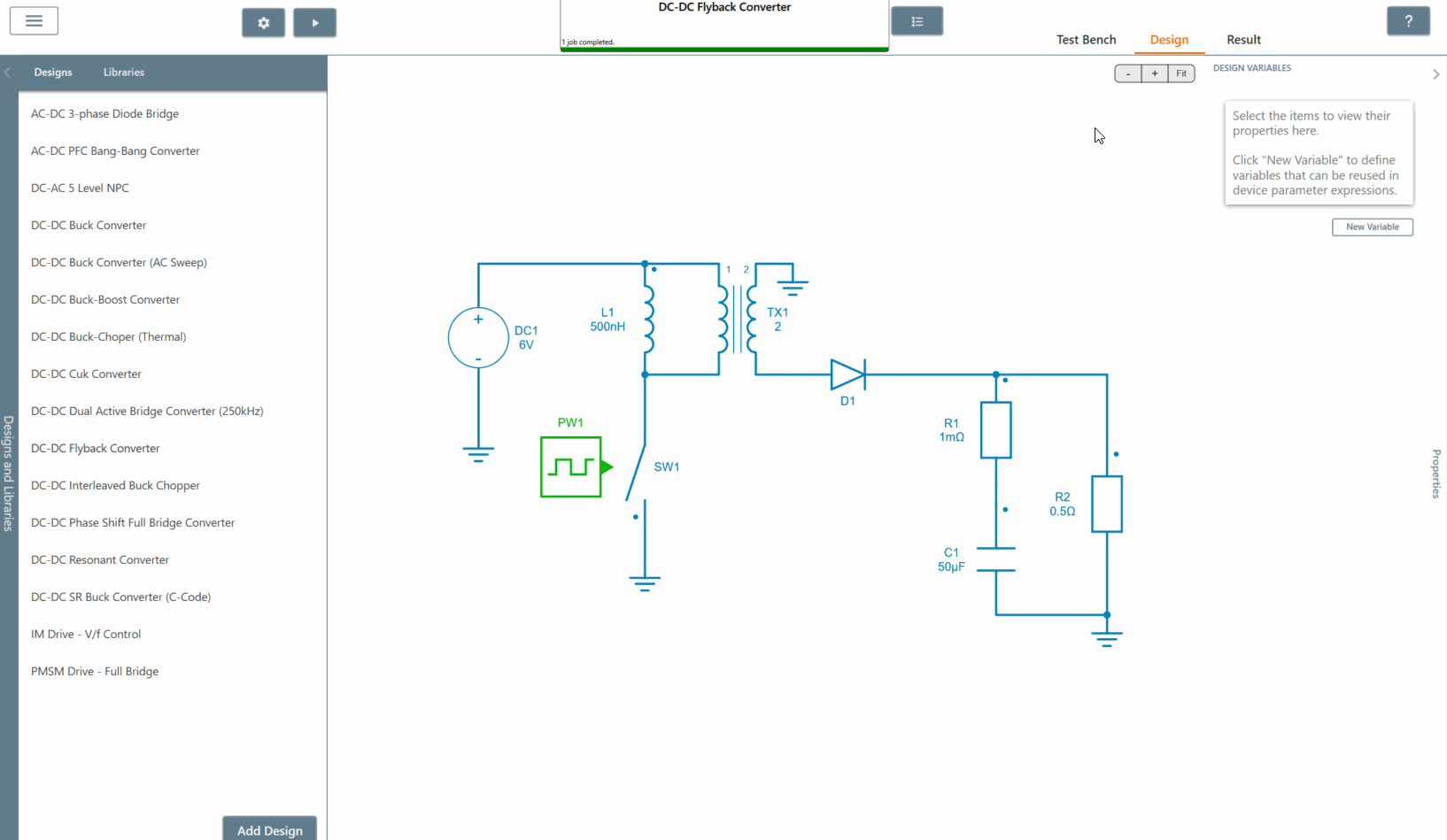Steady State Analysis
This tutorial covers the Stop at Steady State feature of Simba.
This feature can help you to:
- automatically stop the simulation when the steady state is reached
- save time because you do not need to restart the circuit several times if you are not sure when the simulation should be stopped.
How to use the steady state analysis feature for any circuit?
To describe this feature, let's take the example of a DC-DC Flyback converter.
We will configure the "Transient Analysis Settings" from the "wheel" icon.
If you click on this icon, you will see:
-
Solver type: Fixed time step or Predictive time step. More information on the definition of the time step can be found on the Simulation engine documentation
-
Min Time Step (S): the minimum time step that will be chosen by the SIMBA solver to run the simulation. Of course, the time step can be modified and increased to obtain fast and accurate results.
-
Stop at steady state" : Enable to use this function.
-
"end time" : Not required when Stop at Steady State is enabled.

✔ Step 1 : Let's run the circuit with "end time=0.002s". As you can see in the "progress bar", it doesn't take long to run the circuit.

✔ Step 2: Now you can go to the "Result" tab and you will see the "R2 - Voltage" signal and you can observe that there is an overshoot during the transient analysis and then the steady state is reached with an end of simulation of 2ms. Of course, you can clearly see that the steady state is reached before 2ms and that time could be gained during the simulation. The steady state value reaches 4V as calculated in the mathematical equation of the flyback topology.

✔ Step 3 : Now, let's run the simulation again but first we will check the box "stop at steady state " and see how long the steady state will be reached. By clicking on the "box", the "end time" disappears. Now we can click on the "run" simulation icon and after a few milliseconds we can observe when the steady state is reached. The simulation is almost instantaneous!

✔ Step 4: Now you can observe that the final time in the "result" tab is about 0.7ms! Thus, the steady state for this simulation is reached at 0.7ms, which is well before the 2ms simulated in the previous simulation. With this feature, you can save time for all circuits.
Important
To determine if steady state has been reached, SIMBA analyzes the rms value and the highest non DC harmonics (if any) of all simulated state variables.

This concludes the introduction to Simba's steady state analysis. Note that when "Stop at Steady-State" is enabled, the "End Time" parameter is not used, and the simulation stops when SIMBA detects the steady state. This feature is particularly useful during a parametric analysis because each run may have different time constants and the Stop at Steady-State feature ensures that each run will stop at its steady state.